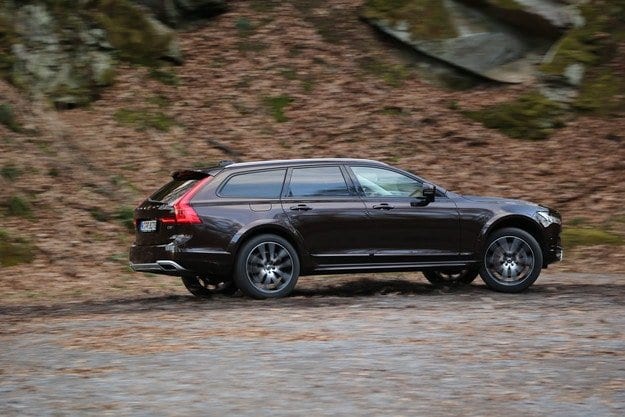
Test drive Volvo V90 Cross Country D5: traditions are changing

First kilometers behind the wheel of the heir to one of Volvo's most iconic models
In the second half of the 90s, the Volvo station wagon, known for its durability and practicality, turned into something very interesting - a new version with higher suspension, body protection and dual drive, based on the new, but extremely attractive. market segment. Yes, we are talking about the Volvo V70 Cross Country, which first saw the light of day in 1997. The idea proved so successful that other well-known brands soon followed: first Subaru and Audi, much later VW with the Passat Alltrack, and very soon Mercedes with the new E-Class All-Terrain.
Heir to a rich tradition
In fact, at Volvo we always end up with a certain Swedish folklore sooner or later. That's why we can't wait to see this iconic model from the brand. Take, for example, the interior of a car, which looks more like a warm wooden house in the snow than a traditional interior. Everything here creates a special feeling of home comfort and warmth. This atmosphere can only be found in Volvo cars: soft seats, expensive but simple-looking materials, minimized functional elements. And that restrained elegance, in which beauty lies not in elegance, but in simplicity.
The V90 has extremely extravagant equipment that is sure to please the tech-minded customer. The only drawback in this regard is the fact that the almost countless functions are controlled primarily by the center console touchscreen, which itself boasts great graphics, but it takes time to work with and is definitely a distraction for the driver, especially while driving. The rest of the space is on the usual, though not quite top level for a classroom.
From now on with only four cylinders
It's time to get behind the wheel, turn the shiny décor button to start the engine, and I'll try not to wait for the news that this model is now only available with four-cylinder engines. In the most powerful version with 235 horsepower, the diesel engine has two turbochargers, which, paired with an eight-speed automatic transmission, successfully compensate for fluctuations at the lowest revs. The automatic transmission with torque converter operates invisibly and usually shifts up early, which has a positive effect on driving comfort. Thrust at intermediate acceleration is very confident - a logical consequence of the impressive 625 Nm of torque available at 1750 rpm. However, true Volvo fans are likely to overlook the unprecedented work intent typical of the iconic five-cylinder engines of the company's recent past. Not for nothing, I will add.
Pneumatic rear suspension and standard dual transmission
The CC offers the option of equipping the rear axle with air suspension on the rear axle, which provides extra comfort, especially when the body is fully loaded. Thanks to the increased ground clearance of up to 20 cm, the Volvo leans relatively sharply in corners, but this does not affect its driving performance. The steering works quite easily and accurately. In terms of behavior on the road (as well as off-road), the model is not inferior to the average representative of such a modern SUV category, however, it does not encounter design flaws typical for this type of car. Lots of people like that the Cross Country still claims off-road skills - a BorgWarner clutch takes up to 50 percent of the traction to the rear axle when needed.
Text: Bozhan Boshnakov
Photo: Hans-Dieter Zeifert
